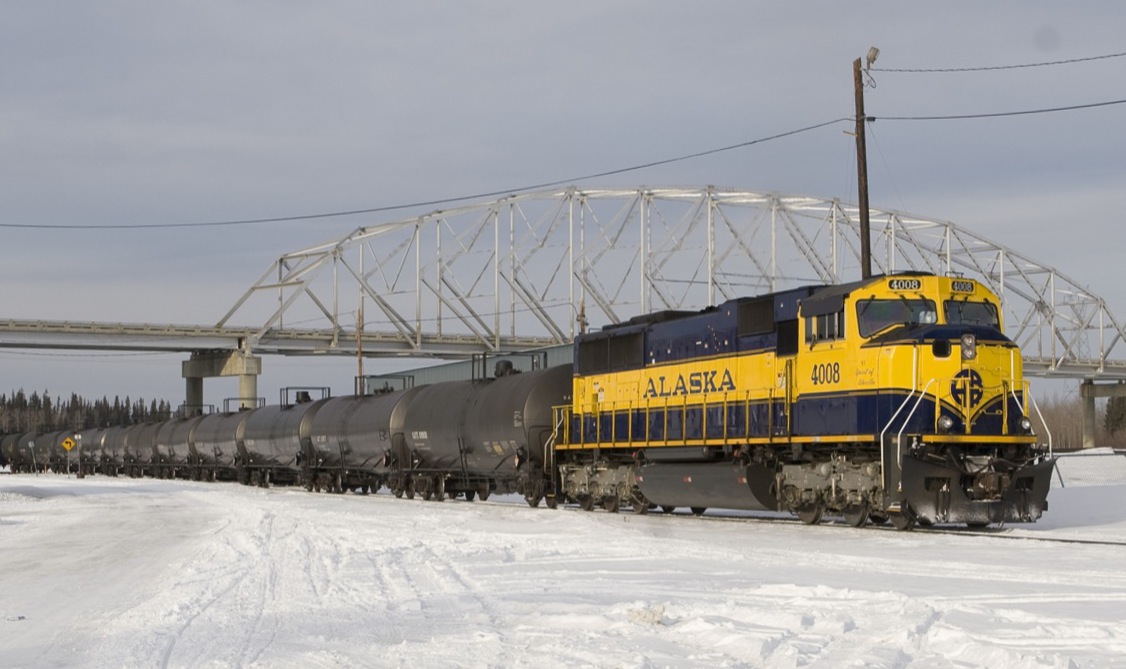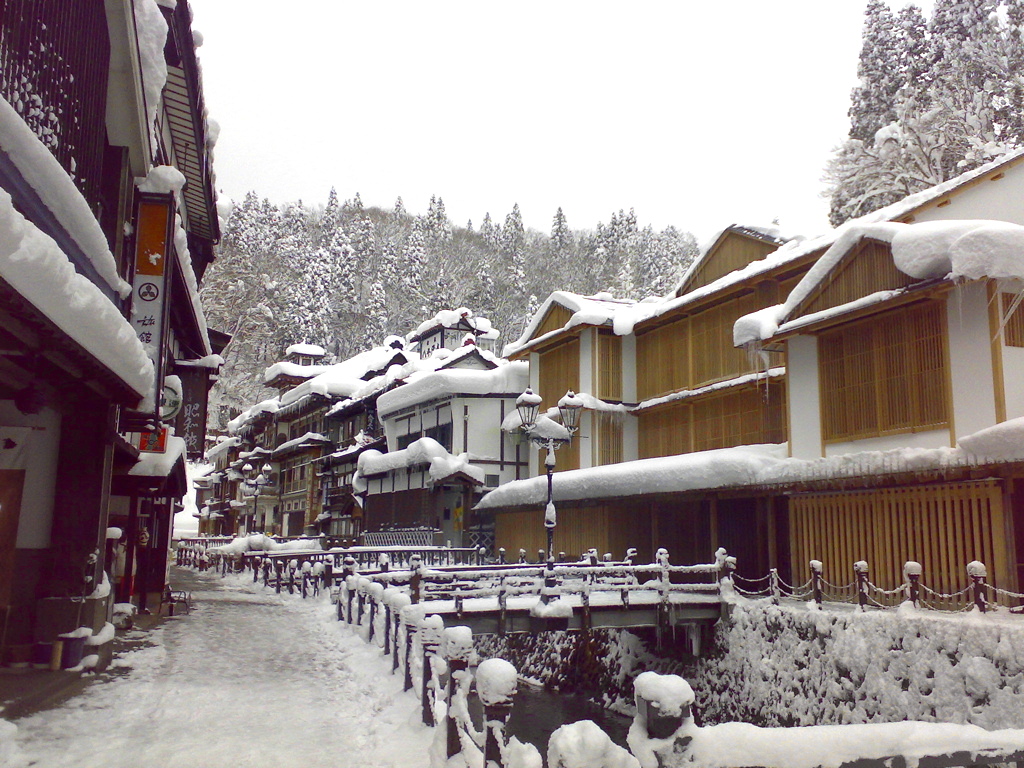|
ĹŚishida Station
is a junction railway station in the town of ĹŚishida, Yamagata, Japan, operated by East Japan Railway Company (JR East). Lines ĹŚishida Station is served by the ĹŚu Main Line and the Yamagata Shinkansen, with direct high-speed '' Tsubasa'' services to and from Tokyo. It is located 126.9 rail kilometers from the terminus of both lines at Fukushima Station. Station layout The station has two opposed side platforms connected to the station building by a footbridge. The station has a ''Midori no Madoguchi'' staffed ticket office. Platforms History ĹŚishida Station opened on 21 October 1901. The privately owned Obanazawa Railroad connected to the station from 1926 until its abandonment in 1970. A new station building was completed in 1983. The station was absorbed into the JR East network upon the privatization of JNR on 1 April 1987. The Yamagata Shinkansen began operations on 4 December 1999. Passenger statistics In fiscal 2018, the station was used by an average of 792 ... [...More Info...] [...Related Items...] OR: [Wikipedia] [Google] [Baidu] |
Side Platform
A side platform (also known as a marginal platform or a single-face platform) is a platform positioned to the side of one or more railway tracks or guideways at a railway station, tram stop, or transitway. A station having dual side platforms, one for each direction of travel, is the basic design used for double-track railway lines (as opposed to, for instance, the island platform where a single platform lies between the tracks). Side platforms may result in a wider overall footprint for the station compared with an island platform, where a single width of platform can be shared by riders using either track. In some stations, the two side platforms are connected by a footbridge or tunnel to allow safe access to the alternate platform. While a pair of side platforms is often provided on a dual-track line, a single side platform is usually sufficient (trains are usually only boarded from one side) for a single-track line. Layout Where the station is close to a level crossing (g ... [...More Info...] [...Related Items...] OR: [Wikipedia] [Google] [Baidu] |
Stations Of East Japan Railway Company
Station may refer to: Agriculture * Station (Australian agriculture), a large Australian landholding used for livestock production * Station (New Zealand agriculture), a large New Zealand farm used for grazing by sheep and cattle ** Cattle station, a cattle-rearing station in Australia or New Zealand **Sheep station, a sheep-rearing station in Australia or New Zealand Communications * Radio communication station, a radio frequency communication station of any kind, including audio, TV, and non-broadcast uses ** Radio broadcasting station, an audio station intended for reception by the general public ** Amateur radio station, a station operating on frequencies allocated for ham or other non-commercial use ** Broadcast relay station ** Ground station (or Earth station), a terrestrial radio station for extraplanetary telecommunication with satellites or spacecraft ** Television station * Courier station, a relay station in a courier system ** Station of the ''cursus publicus'', a s ... [...More Info...] [...Related Items...] OR: [Wikipedia] [Google] [Baidu] |
Railway Stations In Yamagata Prefecture
Rail transport (also known as train transport) is a means of transport using wheeled vehicles running in tracks, which usually consist of two parallel steel rails. Rail transport is one of the two primary means of land transport, next to road transport. It is used for about 8% of passenger and freight transport globally, thanks to its energy efficiency and potentially high speed.Rolling stock on rails generally encounters lower frictional resistance than rubber-tyred road vehicles, allowing rail cars to be coupled into longer trains. Power is usually provided by diesel or electric locomotives. While railway transport is capital-intensive and less flexible than road transport, it can carry heavy loads of passengers and cargo with greater energy efficiency and safety. Precursors of railways driven by human or animal power have existed since antiquity, but modern rail transport began with the invention of the steam locomotive in the United Kingdom at the beginning of the 19th ... [...More Info...] [...Related Items...] OR: [Wikipedia] [Google] [Baidu] |
Ginzan Onsen
Ginzan Onsen (銀山温泉) is an onsen (hot spring) area in Obanazawa, Yamagata Prefecture, Japan. Its name means "silver mine hot spring". Ginzan Onsen's economy grew due to silver mining and production and eventually transitioned to tourism when it opened dozens of hot spring resorts and ryokan along the central river that runs through the town. The mountains that surround this town yield rich hot spring water that is used both in the private hotels and public baths in the city centre. The centre of town is a pedestrian-only district. After nightfall, the bridges and streets are lit by gaslight. In the winter Ginzan Onsen receives heavy snow. On the far side of town a 22-foot waterfall, ''Shirogane-no-Taki Falls'', emerges from the mountains not far from the old silver mine, ''Nobesawa Ginzan''. Internationally, this town saw a sharp rise in foreign tourism thanks to the famous snow-covered sights in the winter. There are no modern buildings within the town, the architect ... [...More Info...] [...Related Items...] OR: [Wikipedia] [Google] [Baidu] |
Mogami River
The is a river in Yamagata Prefecture, Japan. Description and history The river is 224 km long and has a watershed of 7,040 km2. It is regarded as one of the three most rapid rivers of Japan (along with the Fuji River and the Kuma River). The river rises from southern Yamagata Prefecture, flows to the north, and turns west at Shinjō, then flows into the Sea of Japan at Sakata. Water transportation once flourished on the river and carried local products such as safflowers and rice to the Kansai region. Cultural references The Mogami River appears as an '' utamakura'' in Japanese poetry, with the influential 17th-century poet Matsuo Bashō composing several hokku regarding the river during his travels alongside it. Some were revised as haiku in the memoir of his journeys, including this well-known poem: : ::''samidare o atsumete hayashi Mogami-gawa'' :gathering the rains :of the wet season — swift :the Mogami River :(''trans. Shirane'') The character Yūko ... [...More Info...] [...Related Items...] OR: [Wikipedia] [Google] [Baidu] |
Privatization
Privatization (rendered privatisation in British English) can mean several different things, most commonly referring to moving something from the public sector into the private sector. It is also sometimes used as a synonym for deregulation when a heavily regulated private company or industry becomes less regulated. Government functions and services may also be privatised (which may also be known as "franchising" or "out-sourcing"); in this case, private entities are tasked with the implementation of government programs or performance of government services that had previously been the purview of state-run agencies. Some examples include revenue collection, law enforcement, water supply, and prison management. Another definition is that privatization is the sale of a state-owned enterprise or municipally owned corporation to private investors; in this case shares may be traded in the public market for the first time, or for the first time since an enterprise's previous natio ... [...More Info...] [...Related Items...] OR: [Wikipedia] [Google] [Baidu] |
Fukushima Station (Fukushima)
is a railway station in the city of Fukushima, Fukushima, Fukushima, Fukushima Prefecture, Japan. The station is the terminal station, terminus for the JR East Yamagata Shinkansen, and Ōu Main Line, as well as the Public–private partnership#Japan, third-sector Abukuma Express Line and privately operated Fukushima Kotsu Iizaka Line. Lines *JR East **Tohoku Shinkansen **Yamagata Shinkansen **Tōhoku Main Line **Ōu Main Line *Abukuma Express ** Abukuma Express Line *Fukushima Transportation ** Fukushima Kotsu Iizaka Line, Iizaka Line Station layout The station is separated into an east and a west section. Within the area after entering the ticket gates, the opposite sections of the station are accessible via a pedestrian tunnel that runs over the tracks. Outside of the ticketed area, pedestrians must use a tunnel to access the opposite section. Cyclists and other vehicles must utilize the bridges to either the north or south of the station. All lines, except for the Abukuma ... [...More Info...] [...Related Items...] OR: [Wikipedia] [Google] [Baidu] |
Kitamurayama District, Yamagata
is a Districts of Japan, rural district located in Yamagata Prefecture, Japan. As of October 2020, the district has an estimated population of 6,577 and an area of 79.54 km2. The cities of Murayama, Yamagata, Murayama, Higashine, Yamagata, Higashine and Obanazawa, Yamagata, Ozanazawa and a portion of the city of TendĹŤ, Yamagata, TendĹŤ were formerly part of Kitamurayama District. Towns and villages *ĹŚishida, Yamagata, ĹŚishida History Murayama County was an ancient place name in part of Dewa Province, occupying the area of modern Mogami District, Yamagata, Mogami, Nishimurayama District, Yamagata, Nishimurayama, Higashimurayama District, Yamagata, Higashimurayama and Kitamurayama districts. Under the Tokugawa shogunate, the area Kitamurayama district was a complicated mosaic. Two towns and 48 villages were tenryo ruled directly by the Tokugawa shogunate, 32 villages were part of Matsumae Domain in Ezo, 13 villages were part of ShinjĹŤ Domain, 7 villages were under Tsuc ... [...More Info...] [...Related Items...] OR: [Wikipedia] [Google] [Baidu] |
Tsubasa (train)
The is a high-speed Shinkansen train service operated on the Yamagata Shinkansen by East Japan Railway Company (JR East) since July 1992. The name was formerly used for a limited express service operated by Japanese National Railways (JNR) and later by JR East, which ran from Ueno to Akita, and was discontinued in 1992 when the new shinkansen service commenced. The Japanese word "tsubasa" means "wing". Service outline The services were originally operated by 7-car 400 series trains, later replaced by 7-car E3 series trains. They couple with E2 series trains for their journey from Tokyo to Fukushima, traveling at a maximum speed of . ''Tsubasa'' trains are limited to on the Yamagata Shinkansen from Fukushima to ShinjĹŤ since there are many sharp curves and level crossings, as the line is essentially a re-gauged narrow-gauge line. Starting 16 March 2024, services are also operated by 7-car E8 series, gradually replacing E3 series in the future. They operate in conjunction ... [...More Info...] [...Related Items...] OR: [Wikipedia] [Google] [Baidu] |
Yamagata Shinkansen
The is a Mini-shinkansen route in Japan, operated by East Japan Railway Company (JR East). It provides service between Tokyo and ShinjĹŤ in Yamagata Prefecture over the tracks of the Tohoku Shinkansen and the ĹŚu Main Line. The term Yamagata Shinkansen refers to the segment that connects Fukushima and ShinjĹŤ. Because the shinkansen trains share tracks with local trains running on , it is often referred to as a "mini-shinkansen". Operations Trains consist of 7-car E3 and E8 series trainsets operating as '' Tsubasa'' services. Between and Fukushima, some trains run coupled to '' Yamabiko'' trains on the TĹŤhoku Shinkansen. Between Fukushima and ShinjĹŤ, the trains run on their own at a maximum speed of and share the line with regular ĹŚu Main Line trains. As of July 2012, about 62 million passengers had ridden the line since it opened in July 1992. The fastest trains connect Tokyo and Yamagata stations in two hours and 29 minutes. Construction of a new approach line a ... [...More Info...] [...Related Items...] OR: [Wikipedia] [Google] [Baidu] |



